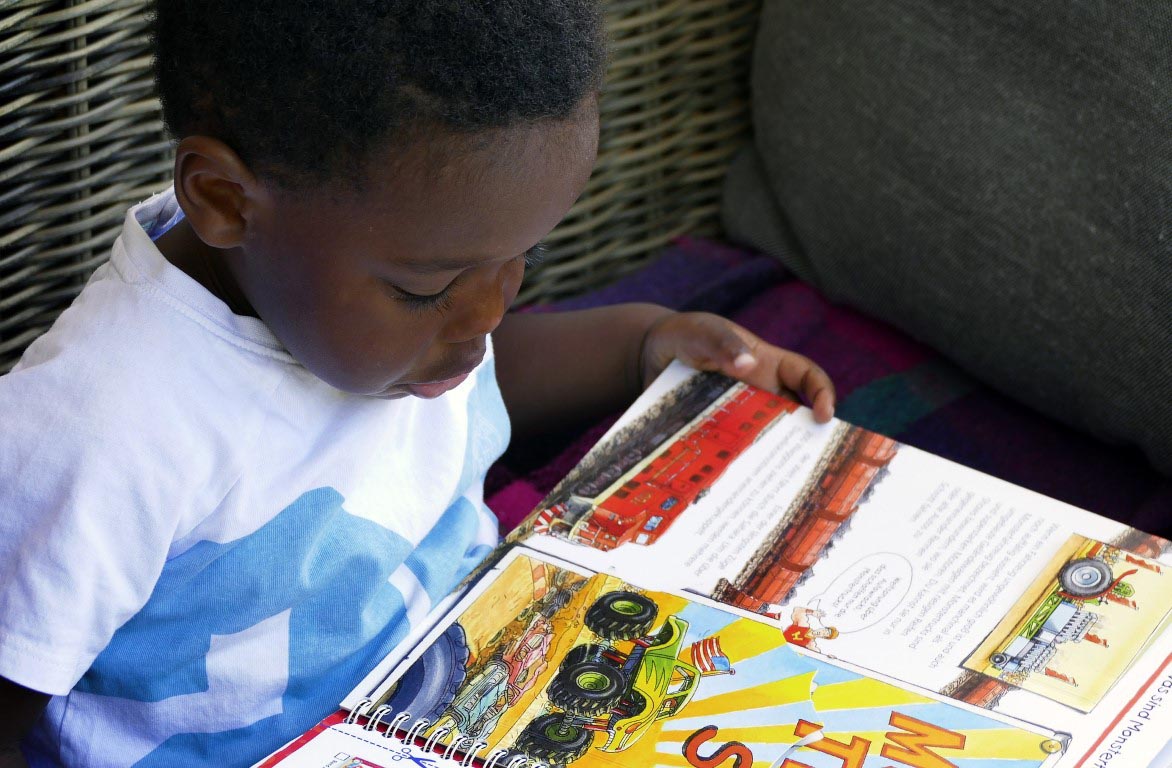As adults, we speak and express ourselves without being cognizant of the processes that occur before we sound out our words. This is all thanks to our parents and childhood teachers who instilled the basics of phonics into our lives. Where is this going? We must not forget that the foundations of learning how to read aid in literacy development and we must teach it to our children. When we read a book to our child at the tender age of three, they can easily memorise the words (which is great and is an important part of development). It signifies that a child has heard something enough times to memorise it, similar to hearing a commercial over and over.
Similarly, if your child is holding the book correctly and turning the pages at approximately the right times, he’s demonstrating his understanding of the relationship of the printed word to the spoken word – in other words, he’s engaging in “pretend reading.” But while this is a super important first step for pre-readers, memory has its limitations – that’s why learning things like letter names and how sounds correspond to the letter are important – and that’s where phonics comes in.
Ms. Santana Morris, Executive Director at the Jamaica Intensive Reading Clinic with over seven years’ experience in literacy speaks to us about phonics, phonological awareness and why these are important to Buzzz readers.
Phonics is a key element of reading- it refers to letter-sound relationships and the rules that affect those relationships. Likewise, phonological awareness is defined as the ability to conceive of spoken words as sequences of sound segments which correspond to the written units and manipulate those segments into words.
Are reading and phonological awareness correlated? Yes. Research has shown that phonological awareness is an important aspect of teaching children to read. Children who have well-developed phonological awareness when they begin school normally have a head start when it comes to making sense of how sounds and letters operate in print.
Here is why phonics and phonological awareness are so important. The goal of reading is to make meaning from print through the process of decoding. In this case, phonics produces significant benefits for children at the early childhood level to the end of primary school. Phonological awareness is also important in order to gain an understanding of the usage of the sound structure of language. Children with a good understanding of phonological awareness have the framework in place for reading (decoding) and letter-sound correspondences (phonics).
To Read More: Purchase your copy of Volume 9 #4– September-October 2017


Share this post:
As adults, we speak and express ourselves without being cognizant of the processes that occur before we sound out our words. This is all thanks to our parents and childhood teachers who instilled the basics of phonics into our lives. Where is this going? We must not forget that the foundations of learning how to read aid in literacy development and we must teach it to our children. When we read a book to our child at the tender age of three, they can easily memorise the words (which is great and is an important part of development). It signifies that a child has heard something enough times to memorise it, similar to hearing a commercial over and over.
Similarly, if your child is holding the book correctly and turning the pages at approximately the right times, he’s demonstrating his understanding of the relationship of the printed word to the spoken word – in other words, he’s engaging in “pretend reading.” But while this is a super important first step for pre-readers, memory has its limitations – that’s why learning things like letter names and how sounds correspond to the letter are important – and that’s where phonics comes in.
Ms. Santana Morris, Executive Director at the Jamaica Intensive Reading Clinic with over seven years’ experience in literacy speaks to us about phonics, phonological awareness and why these are important to Buzzz readers.
Phonics is a key element of reading- it refers to letter-sound relationships and the rules that affect those relationships. Likewise, phonological awareness is defined as the ability to conceive of spoken words as sequences of sound segments which correspond to the written units and manipulate those segments into words.
Are reading and phonological awareness correlated? Yes. Research has shown that phonological awareness is an important aspect of teaching children to read. Children who have well-developed phonological awareness when they begin school normally have a head start when it comes to making sense of how sounds and letters operate in print.
Here is why phonics and phonological awareness are so important. The goal of reading is to make meaning from print through the process of decoding. In this case, phonics produces significant benefits for children at the early childhood level to the end of primary school. Phonological awareness is also important in order to gain an understanding of the usage of the sound structure of language. Children with a good understanding of phonological awareness have the framework in place for reading (decoding) and letter-sound correspondences (phonics).
To Read More: Purchase your copy of Volume 9 #4– September-October 2017
Share this post: